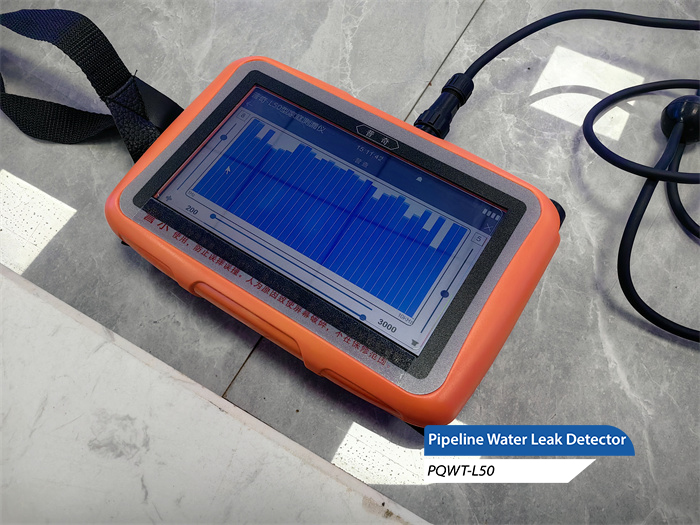With the acceleration of urbanization, water pipes have become an indispensable infrastructure in our lives. However, water leakage from water mains has become a common phenomenon due to aging pipes, construction quality problems or external factors. In order to ensure the safety of residents' water use, it is particularly important to carry out effective water mains leakage detection. In this article, we will provide you with a detailed analysis of the water pipe leakage detection methods and steps to help you prevent and solve this problem from the source.

First, understand the situation
In the water pipe leakage detection before, first of all, to understand the specific circumstances of the leak. This includes looking at the site of the leak, understanding the location and direction of the water main, as well as identifying the material and specifications of the pipe. This information will help determine the cause of the leak and select the appropriate testing method.
II. Pressure retention test
In order to detect whether the water mains is really leaking, it is necessary to carry out a pipe pressure retention test. Turn off the main valve of the water inlet pipe, and then turn off all faucet switches and angle valve switches one by one to avoid affecting the test results. Next, remove the water heater's inlet pipe to prevent damage to the water heater during pressurization. During the holding pressure test, gradually increase the water pressure to 6-8 kilograms and observe whether the pressure is stable. If the pressure cannot be maintained, it means that there is a leak in the tap water pipe.
Third, pipe testing
After confirming the existence of leaks in the water mains, the use of professional leak detection instruments to find specific leaks. The instrument is able to detect the depth of about 5 meters of pipe. The entire pipe is scanned using the "census mode", and the sound of the headphones and the cursor signal on the screen are used to initially determine the suspected leakage point. Under the same circumstances, the sound and signal of normal pipe locations should be relatively consistent. In the leakage location, the sound and signal will be abnormal.
Fourth, verify the test results
In order to ensure the accuracy of the test results, you can use the "localization analysis mode" for verification. In this mode, the instrument will locate the suspected water leakage point with high precision. The final results can be used to confirm the specific location of the leak.
V. Excavation Confirmation
After making sure that there is no error, excavation is carried out to confirm the leakage point. During the excavation process, operate carefully to avoid damaging other pipes or facilities. Once the leakage point is found, repair work can be carried out.
VI. Repair and Maintenance
After the repair is completed, it is necessary to conduct another pressure holding test to ensure that no other leakage points exist. At the same time, regular maintenance and upkeep of the pipes is required to prevent similar problems from recurring. This includes regular inspection of the appearance of the pipes, cleaning the inside of the pipes, and regular replacement of aged or damaged parts.
In conclusion, water pipe leakage detection is an important task that requires specialized skills and equipment to complete. Through the detailed introduction of the above steps, we hope to help the relevant personnel to better carry out the detection and repair work, and to ensure the safety and stability of the tap water supply.








